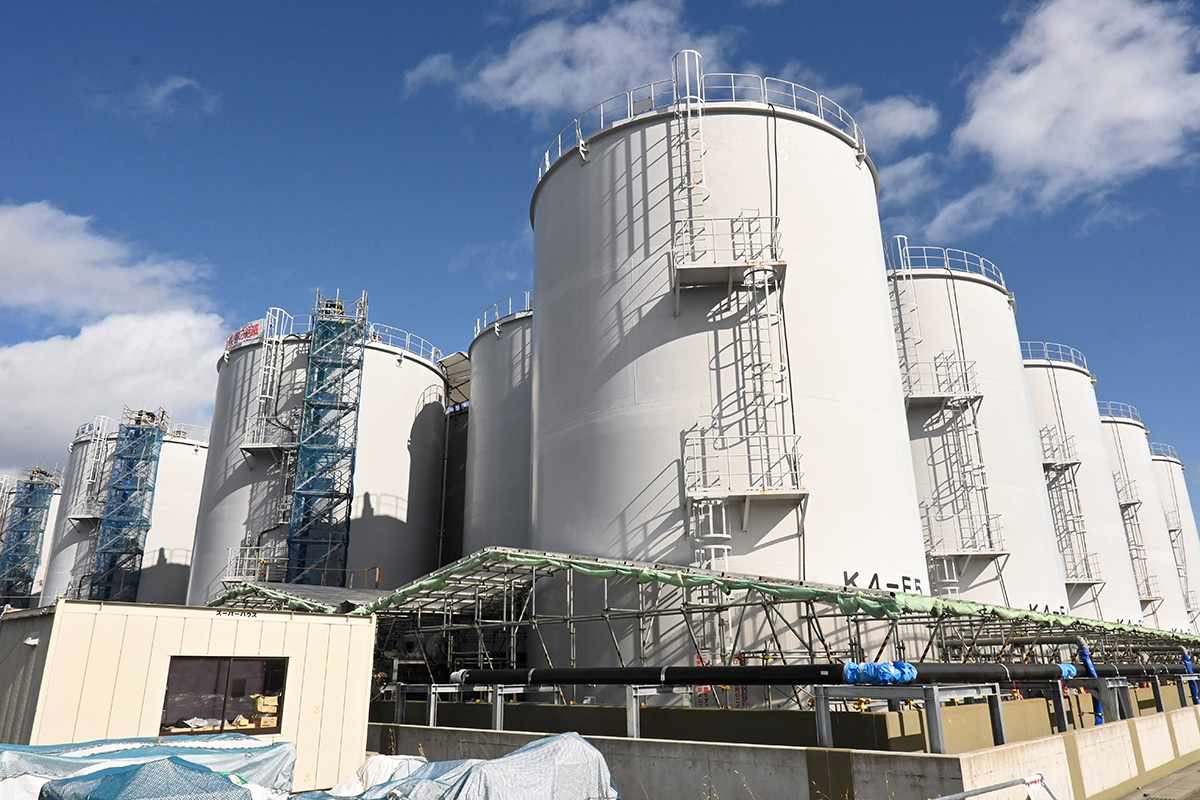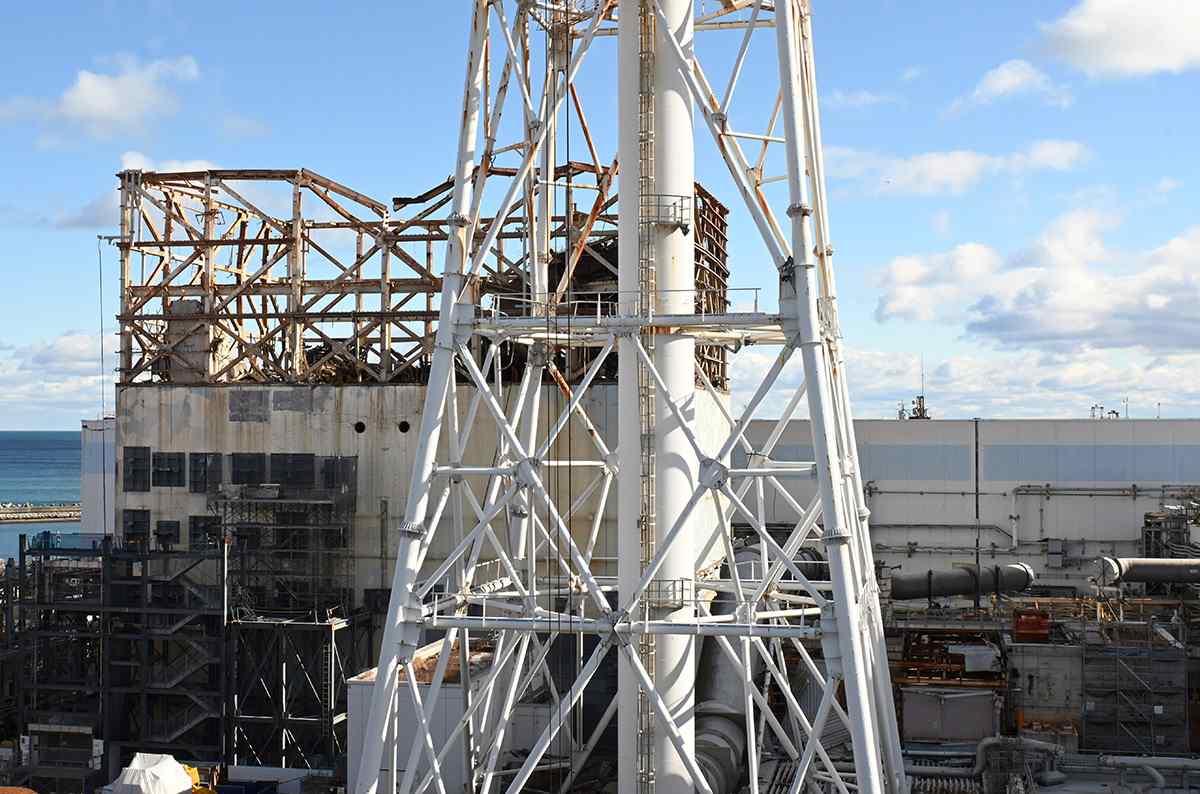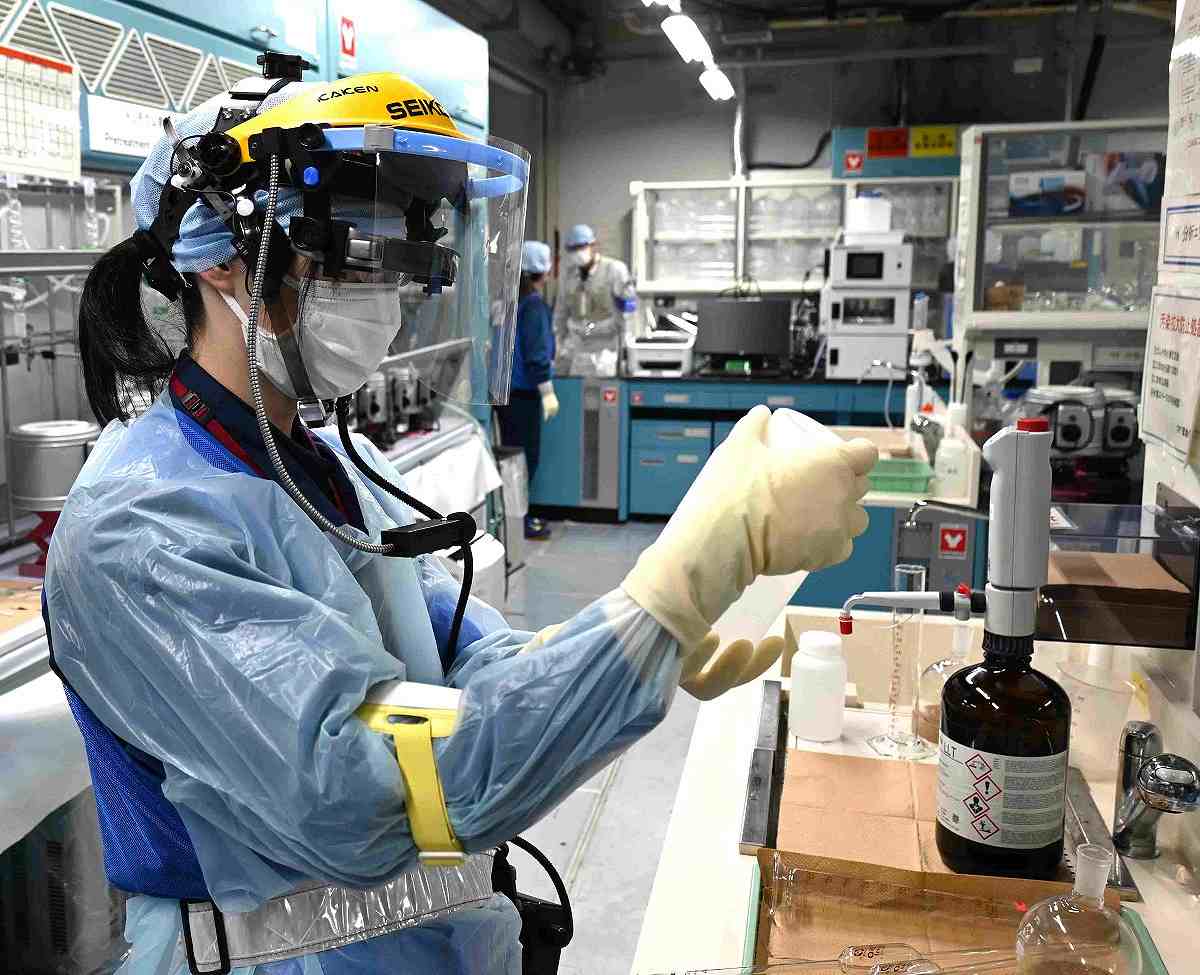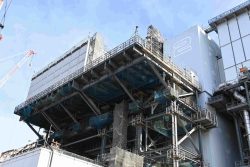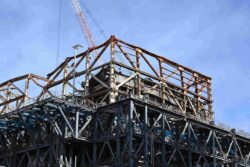Decommissioning Fukushima / Fukushima Residents Seek More Publicity for Safety of Local Fish
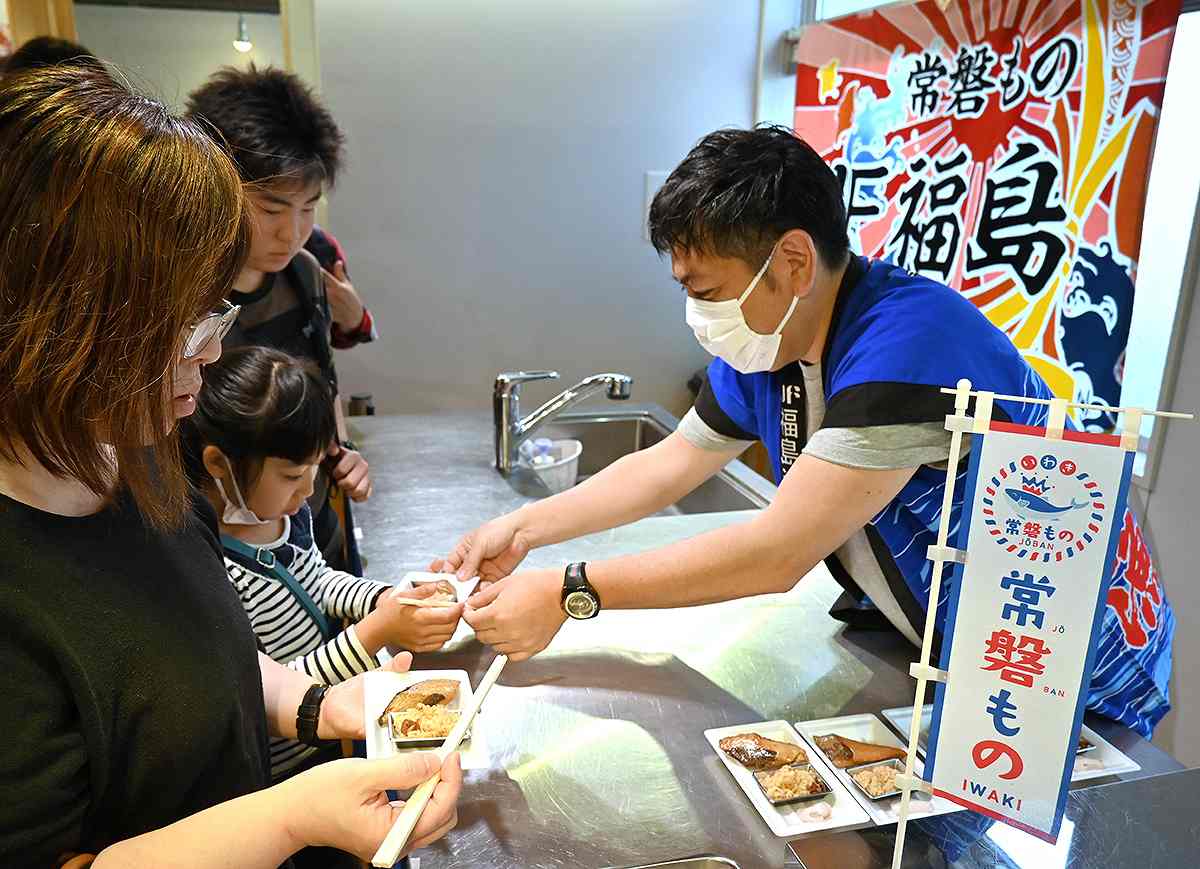
Visitors receive samples at an event promoting “Jobanmono” fish in Tsukiji, Tokyo, on April 8.
11:00 JST, May 6, 2023
The discharge of treated water from the Fukushima No. 1 nuclear power plant belonging to Tokyo Electric Power Company Holdings, Inc. is expected to begin as early as this summer. However, local fishermen are adamantly opposed, arguing that the water’s release will cause new harm to the reputation of the prefectural fishing industry, which is still recovering from the 2011 disaster.
With no prospect of an agreement in sight, the government is likely to be forced to make a difficult decision. I recently walked around Iwaki City, Fukushima Prefecture, and Tsukiji, Tokyo, to hear the voices of fishermen, other residents and foreign visitors.
It was only 8 a.m. on Saturday, April 8, but the Tsukiji Outer Market was already crowded with people, and some stores had long lines. I walked down the street, avoiding pedestrians and bicycles, and arrived at my destination on the third floor of the Tsukiji Fish Market Building. The words “Delicious seafood! Jobanmono” came into view.
The Fukushima Prefectural Federation of Fisheries Co-operative Associations was hosting a free tasting event, which was also very crowded. Sets of three items were handed out to visitors: grilled bonito marinated in soy sauce, flatfish sashimi, and octopus rice. All the fish were caught off Fukushima Prefecture.
-
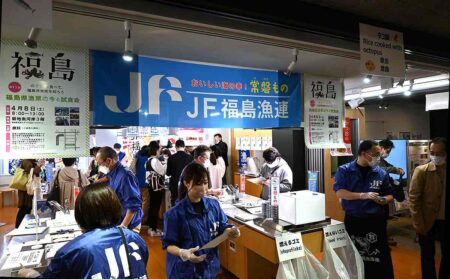
A tasting event for “Jobanmono” fish caught off Fukushima Prefecture
-
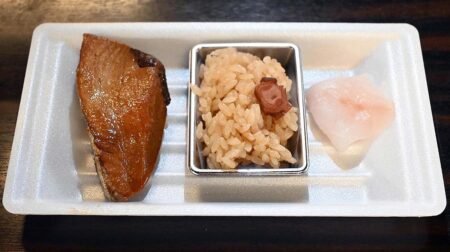
From left: grilled bonito marinated in soy sauce, flatfish sashimi and octopus rice.
Shoppers and foreign tourists came to the venue one after another, drawn by calls on the street. “The grilled bonito is very tasty,” a visitor from Hong Kong said.
I explained that this was an event to encourage people to eat and learn about fish from Fukushima, whose image has suffered due to the accident at the Fukushima No. 1 nuclear power plant. The man replied that the fish was so delicious, more opportunities should be created to promote it to people all over the world.
The event started in March 2017, and this was the 11th time for it to be held, after a hiatus due to the pandemic. The 1,000 meals prepared for the event ran out in no time.
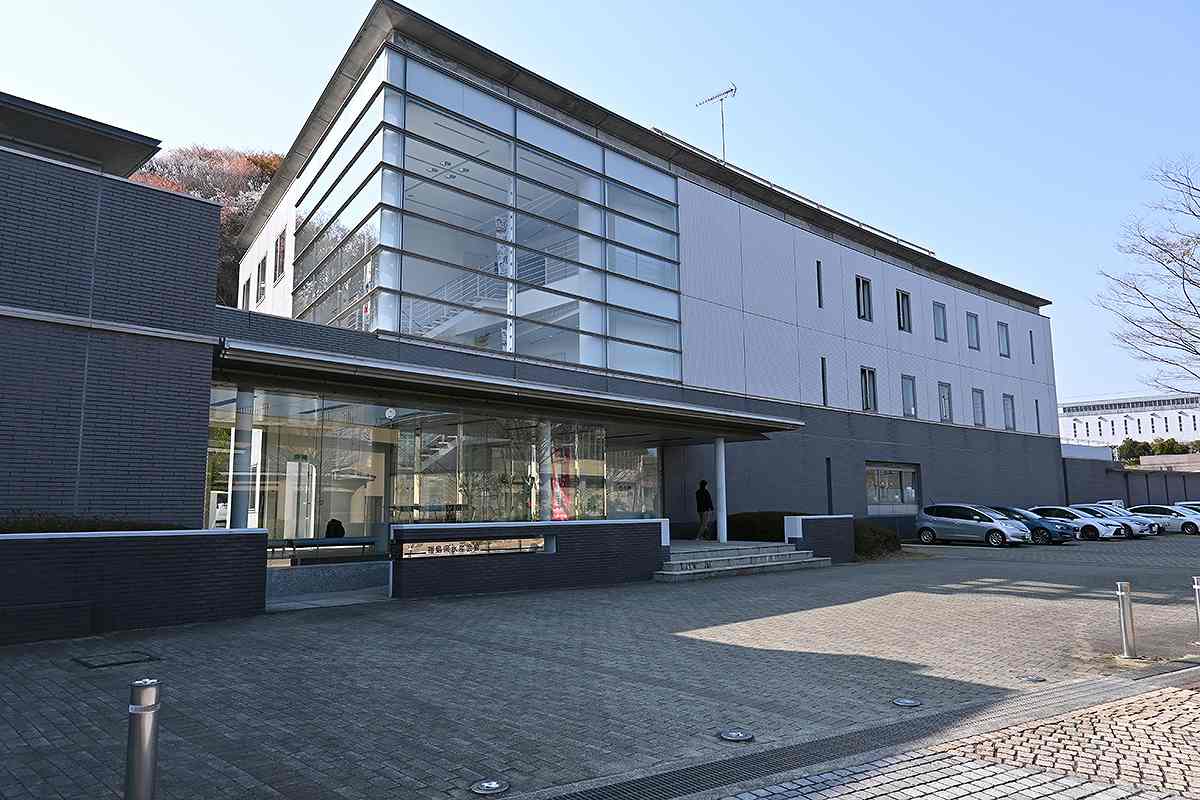
The building that houses the Fukushima Prefectural Federation of Fisheries Co-operative Associations in Iwaki City, Fukushima Prefecture
“The volume of fish landed, which plummeted after the Great East Japan Earthquake, has slowly managed to recover to a little over 20% of its previous level,” said Tadaaki Sawada, chief of the guidance section of the Fukushima Prefectural Federation of Fisheries Co-operative Associations in Iwaki City, Fukushima Prefecture.
“I think the [bad] rumors caused by the nuclear power plant accident are still around. If the treated water is discharged now, the rumors will be amplified. That’s why we’re absolutely opposed to releasing it into the ocean.” Sawada’s tone was soft yet firm.
The area off Fukushima Prefecture is an excellent fishing ground where the cold Oyashio and warm Kuroshio currents collide. Before the earthquake, trawl and purse seine fisheries landed about 200 species of fish a year, including flatfish, saury, bonito, and sand eel. These fish are called “Jobanmono,” and have a reputation for freshness and good flavor.
The earthquake caused over ¥80 billion in damage to market and freezing facilities and vessels, and the government restricted shipments of up to 44 kinds of fish due to radioactive contamination caused by the nuclear power plant accident.
In June 2012, limited-scale fishery operations began and gradually expanded, with about 200 species now eligible for landing, almost restored to their original levels, excluding species with shipping restrictions. The prefectural fisheries federation has been conducting its own inspections in addition to the prefectural government’s monitoring, in an effort to publicize safety.
However, sales have not been good. Despite now shipping to 39 prefectures — initial sales were just within the prefecture — volume is only about 20% of the pre-earthquake level. This is because fish from Fukushima get a lower priority when sold alongside fish from other prefectures. Some of the fish can be landed all over the country, while others can be caught all along the Pacific coast from Chiba Prefecture up to Hokkaido.
Without an increase in sales, landings cannot be increased. However, the smaller landings have shortened the hours spent on fishing, so the fish are now brought in very fresh. Together with proactive PR activities, Jobanmono is once again gaining popularity.
Because the discharge of treated water into the ocean is seen to take place under these circumstances, the fishermen’s federation is unable to change its opposition. The government plans to seek their understanding by using two funds totaling ¥80 billion set up to support the fishing industry and counter reputational damage.
However, Sawada said: “We’re not talking about money to solve the problem. That’s not what we’re looking for. We want to restore the fishing industry in Fukushima Prefecture and improve the situation in which fish are not selling well. The fishing industry is something handed down from generation to generation, and it’s the very life of a fisherman.
“The rumors will not disappear unless not only we, but also consumers, the public and the international community, understand the safety of the treated water. I hope that the safety will be properly understood and that reputational damage will not occur.”
‘No positive factors’
-
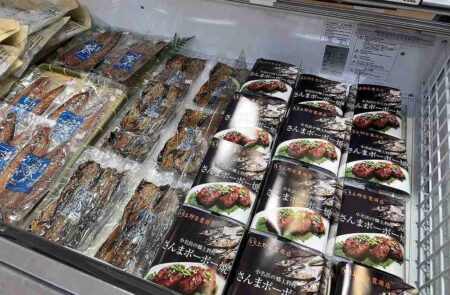
A corner featuring products from Uenodai-yutaka Shoten at a supermarket in Iwaki City
-
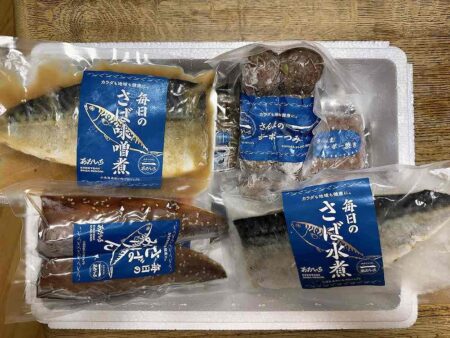
Uenodai-yutaka Shoten products processed from fresh “Jobanmono” fish
-

The Onahama area of Iwaki City facing the sea
I visited Uenodai-yutaka Shoten, a fish processing and sales company in Iwaki City. President Yutaka Uenodai is also worried about new harm to the reputation of Fukushima marine products.
“The discharge of treated water does not make fish taste any better, and there are no positive factors at all. Even if it’s not as bad as immediately after the earthquake, I think a certain amount of damage to our reputation is inevitable,” Uenodai said.
“It was two years ago that the Cabinet decided to discharge treated water into the ocean this year. We understood that the government and TEPCO would only release the water after they had conducted PR on the safety of the treated water and the distribution of fish from Fukushima Prefecture. Those two years were the time to do that,” he said.
“However, the most important time was wasted because of the pandemic. It’s not too late. I want them to do a good job of promotion.”
Uenodai-yutaka Shoten was founded by Yutaka’s grandfather, and mainly processes and sells saury under the motto of preserving the original delicious flavor of the fish.
Po-Po-Yaki, a local delicacy in which minced saury is eaten like a hamburger steak, is an especially popular product. Before the earthquake, the company also sold fresh fish. Recently, the catch of saury has been decreasing, and Uenodai-yutaka Shoten is now processing small-sized saury, which it did not handle in the past.
“Sales have come in waves, but I think they’re finally back to about 50% of what they were before the earthquake,” said Uenodai. Recently, he sold his products at an event in Osaka’s Expo Park and felt a positive response.
Amid vendors from all over the country, including those selling Hokkaido seafood and oysters from Hiroshima, Uenodai’s booth also had a long line, and sales were comparable to those of other prefectures. At such events, people who do not buy Fukushima products do not come from the beginning, so it is easier to sell, but he feels that sales are steadily increasing.
Uenodai stressed: “The release of treated water may not be something I can stop with my words, but I’d like to see more opportunities for people to promote and eat Jobanmono fish. If that’s not possible, I want them to consider the option of purchasing land somewhere and not releasing the treated water.
“What I can do is make delicious products and have people eat them.”
Eat for recovery
-
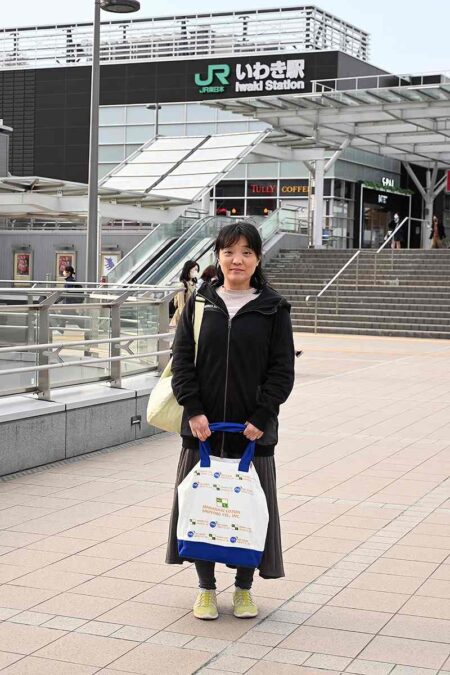
Sachi Michiwaki urges people who support Fukushima’s recovery to eat foods from Fukushima.
-
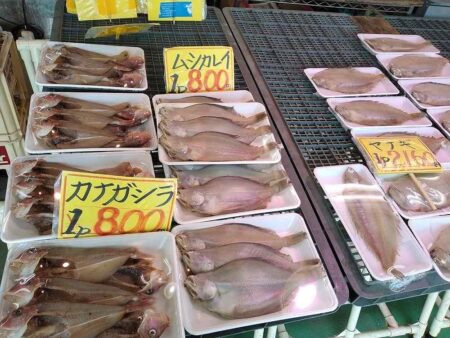
Courtesy of Sachi Michiwaki / Local fish are displayed at a supermarket in Iwaki City
-
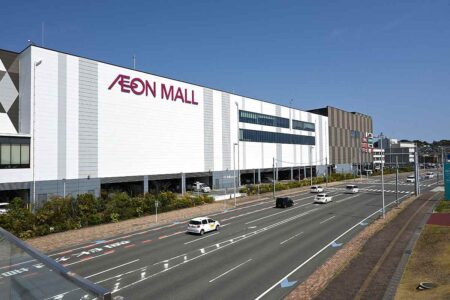
AEON Mall Iwaki Onahama in front of Onahama Port
“A synonym for fine fish. Great for dinner! Jobanmono.” A promotional video of children and local residents dancing and singing cheerfully along with such lyrics was repeatedly played on a monitor at the fresh fish section of the large supermarket AEON Mall Iwaki Onahama in Iwaki City.
Local flatfish sashimi and fresh mehikari fish, which is delicious when deep-fried, were on sale.
“They’re really tasty fish. I think local residents eat it as a matter of course, without questioning whether it’s safe,” said homemaker Sachi Michiwaki, 43, who showed me around. “In fact, I think it’s safer than anywhere else in Japan because it’s sold after very strict inspections to prove it’s OK.”
Michiwaki was born and raised in the Onahama area, facing the sea. “I grew up eating nothing but fish,” she recalled.
She married her husband, a cargo ship officer, and lived in Chiba Prefecture, but returned to her hometown two years ago and is raising her 11-year-old son and 8-year-old daughter. Her husband is currently living in Chiba for his job.
-
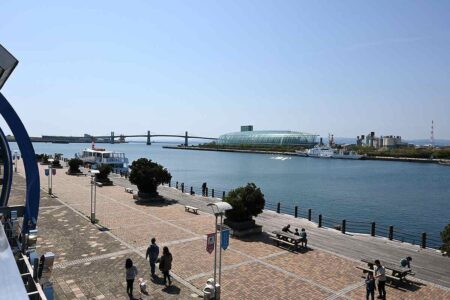
Onahama Port
-
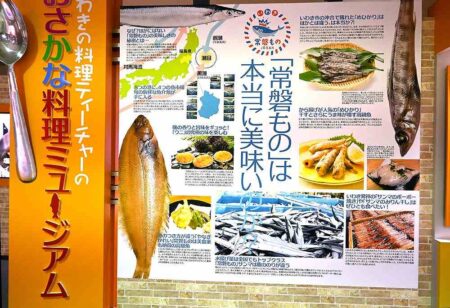
A description of “Jobanmono” fish in a building at Onahama Port
-
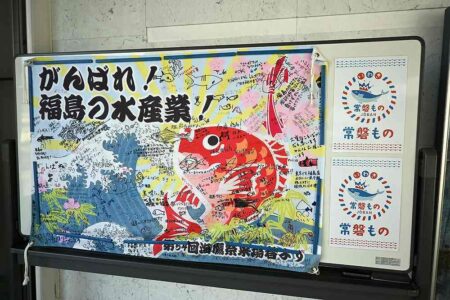
Messages of support for the Fukushima fishery industry are seen in a building at Onahama Port.
“Since I lived in another prefecture, I understand how different the atmospheres are,” said Michiwaki. She showed me a sheet of paper that was distributed at an elementary school in Chiba, listing the production areas of the ingredients used in the school’s lunches.
It lists 20 ingredients and their places of origin, such as milled rice (Chiba) and pork (Ibaraki), but no ingredients from Fukushima. The paper also states, “Foods that exceed radiation standards in tests conducted by the national and prefectural governments will not be used in our school lunches.”
Michiwaki said: “Fukushima’s agricultural and marine products are also being tested, and even though they didn’t exceed the radiation standards, Fukushima ingredients were never used. This was the situation, almost 10 years after the disaster. It’s sad.”
According to a friend from this elementary school, this list continues to this day.
A survey by Fukushima Prefecture found that almost half of the ingredients used in school lunches came from the prefecture in fiscal 2022, a new record high.
“I feel that although the recovery from the disaster is being discussed, Fukushima products are still feared and excluded outside of the prefecture,” Michiwaki said. “If this is the case, reconstruction will never be achieved. If you support the recovery, I want you to eat Fukushima products.”
"JN Specialities" POPULAR ARTICLE
-

The Japan News / Weekly Edition (12/12-12/18)
-

English-language Kabuki, Kyogen Entertain Audiences in Tokyo; Portland State University Professor Emeritus, Graduates Perform
-

Noodle Dining Shunsai / Rich Oyster Ramen to Savor at Odasaga; Experienced 68-year-old Owner Creates Numerous Ramen Varieties
-

The Japan News / Weekly Edition (12/5-12/11)
-

People Keep Loved Ones’ Ashes Close in Special Jewelry, Small Urns as Unique Way to Memorialize Them
JN ACCESS RANKING
-

Keidanren Chairman Yoshinobu Tsutsui Visits Kashiwazaki-Kariwa Nuclear Power Plant; Inspects New Emergency Safety System
-

Imports of Rare Earths from China Facing Delays, May Be Caused by Deterioration of Japan-China Relations
-

University of Tokyo Professor Discusses Japanese Economic Security in Interview Ahead of Forum
-

Tokyo Economic Security Forum to Hold Inaugural Meeting Amid Tense Global Environment
-

Japan Pulls out of Vietnam Nuclear Project, Complicating Hanoi’s Power Plans
